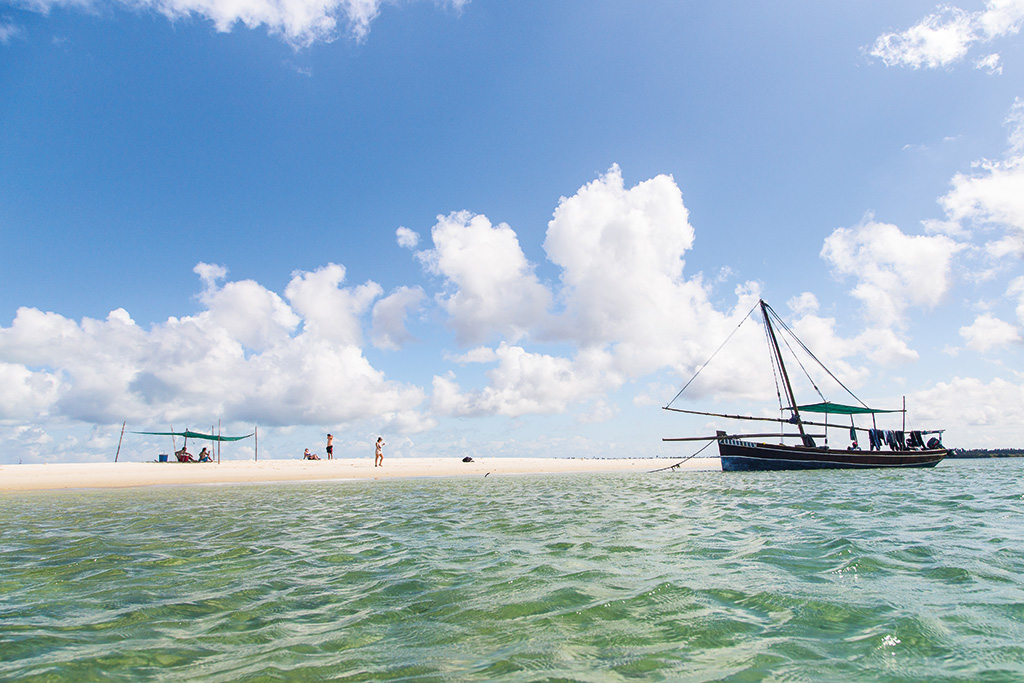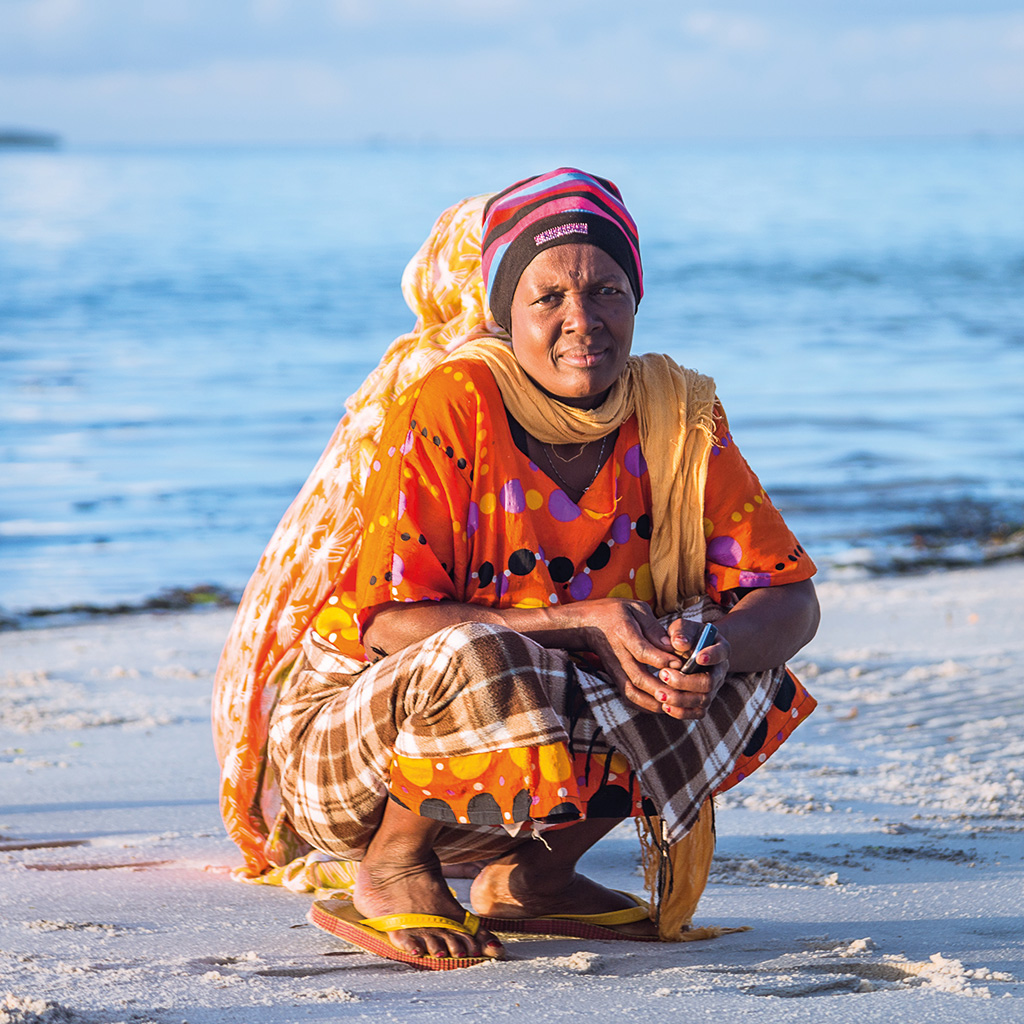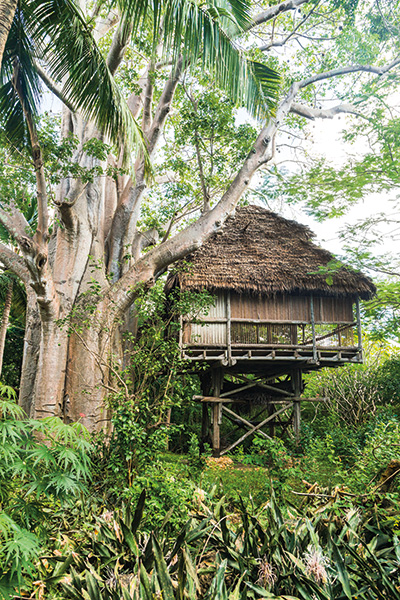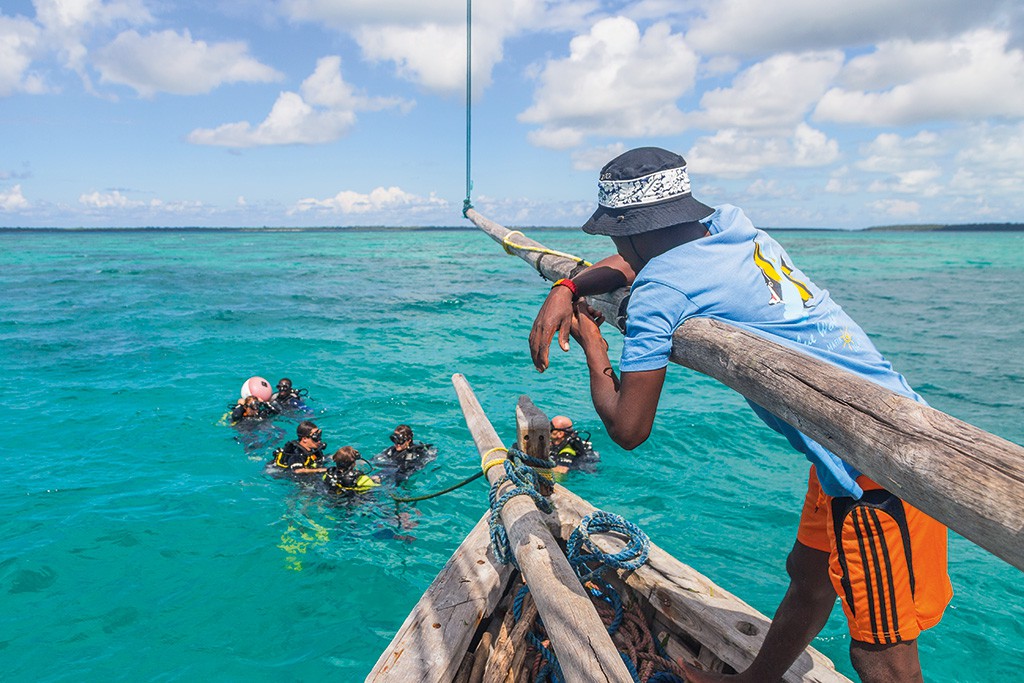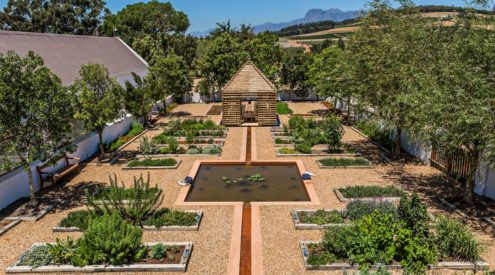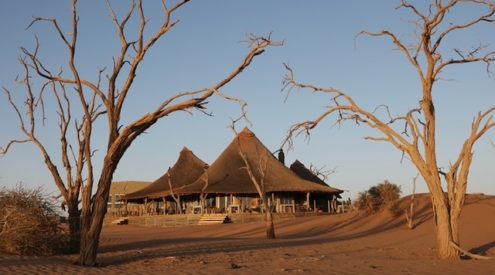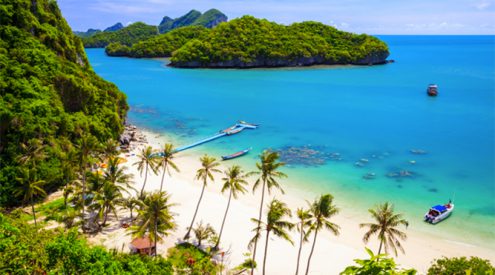Skip the seasonal sun seekers and veneered beaches. Hidden among East Africa’s popular islands is Mafia Island, a place where things work a little differently. Few know about it. Fewer have been. But things may be changing.
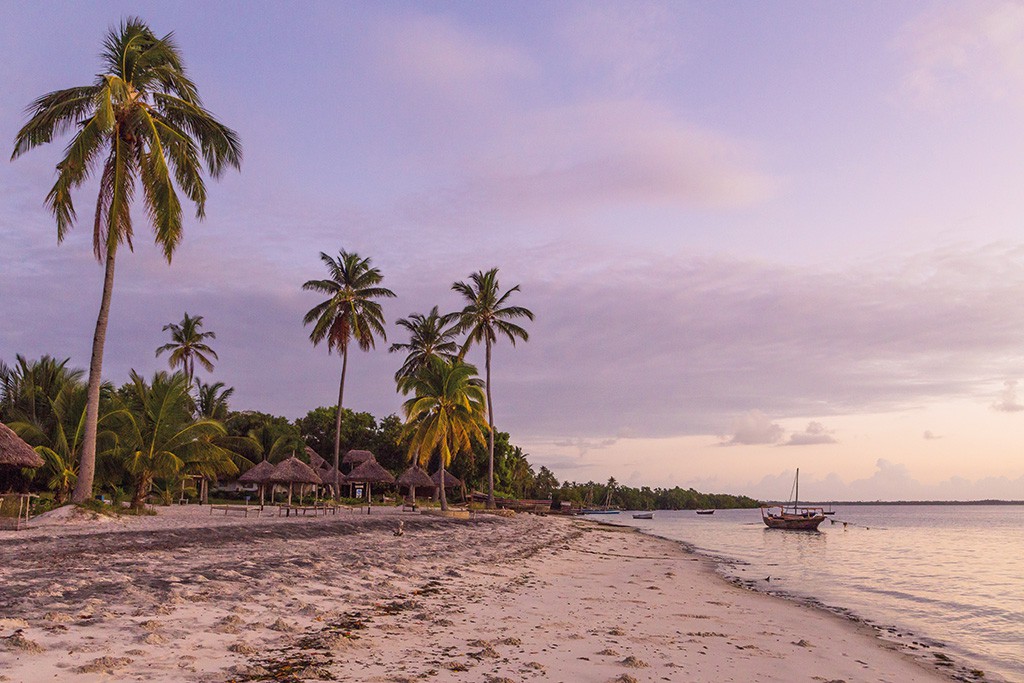
Mafia’s coastline is protected and, unlike its neighbours, the unkempt and wild beaches are littered with floral debris and spiny mangrove roots exactly the way they were when they were first discovered.
It was June. Tanzania had survived another season of waterboarding and anticipation hung over Africa’s East Coast as thick as the post-monsoon humidity. The holiday season loomed and the country’s postcard islands Unguja and Pemba (Zanzibar) were having their annual bikini waxes. Rogue, rain-scattered palm fronds were being plucked from flour-white beaches and debris combed out of sight. Paradise maintenance.
A few clicks south another, lesser-known island had only just woken up, tousled and in no hurry to get dressed. I was heading in its direction on a single-engine, 14-seater Cessna Caravan from Dar es Salaam. The small fuselage twitched over the Indian Ocean like a nervous teenager. I was flying shotgun next to the pilot, a Frenchman named Clement. The co-pilot stick quivered between my legs and the analogue altimeter bounced uncertainly between 4500 and 5000 feet.
‘Is your first time in a small plane?’
‘Yes. What gave it away?’
Clement smiled, ‘No problem, we are very safe.’
He took his hands off the stick, picked up his phone and began texting.
On the horizon, deep blues gave way to turquoise then to a stark white beach lined with a pinstripe of green and, finally, the shimmering black runway of paradise unfamiliar Mafia Island. It was the last piece of tarmac I would see for a week.
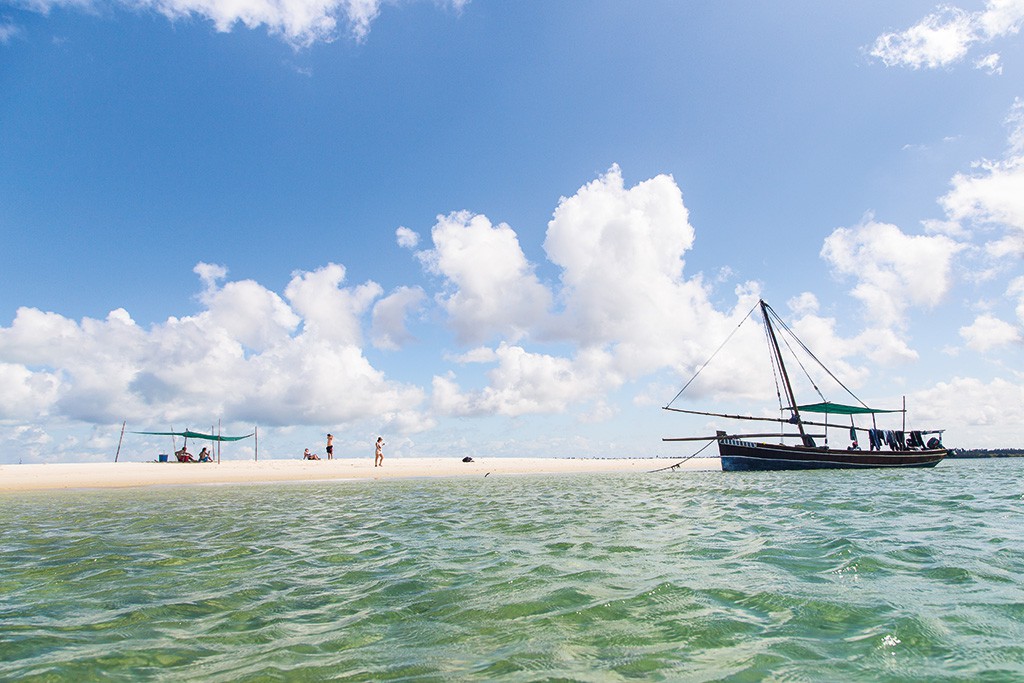
Dhow excursions from Mafia’s handful of lodges are a fundamental activity for guests. Here, scuba divers enjoy a break on one of the sand banks.
See, Mafia is not the kind of place that’s ever needed a black coat on its rustic roads. Nor, it seemed, had it ever wanted one. The cars that kick up dust around Kilondoni, the island’s largest town, are few. You can count them on both hands. Most of Mafia’s 45000-odd population live in small villages dotted around the archipelago, connected by tuk-tuks, bicycles, dhows and the lost art of perambulation.
The mainland is just 50 kilometres long and 15 kilometres wide and its sedentary pace, set to the rhythm of subsistence agriculture and fishing, doesn’t require anyone to be anywhere any time soon. Unlike Zanzibar, which is yo-yoing with Tanzania under the illusion of independence, and fighting criticism for its skewed tourism, Mafia is not plagued by political problems. It’s a time capsule that feels as if it has been sealed for decades.
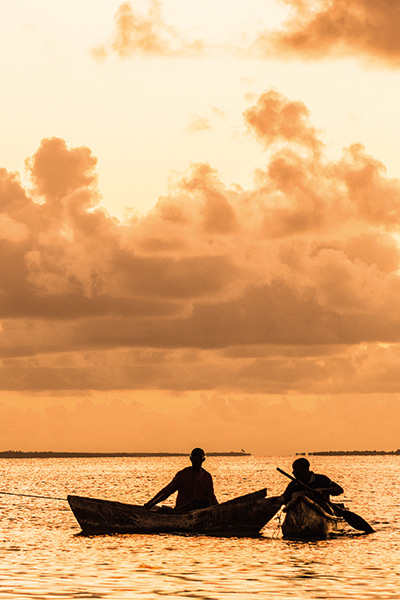
Fishing is a way of life here and men often head out shortly after midnight and return after sunrise with their catch.
On two of its islands – Chole Mjini and Juani – stone ruins hint at a history that stretches back considerably further. Crumbling, overgrown palaces tell tales of early Arab and Omani slave traders. Feudal Swahili kings succeeded them and, much later, Germans laid claim to some of its modest harbours, building docks and marking out roads with the promise of trade. But throughout – and even under the British colonialism that further transformed Africa’s landscape – Mafians continued in much the same way they do today: largely unconcerned with geopolitical squabbling on the continent.
Thatched huts, fortified with pack mud, dot the single-track pathways. Citrus and banana trees grow small but are prolific. Piles of fish and seaweed lie outside to dry. At the Chole boatyard, the tapping of old iron against rough wood resonates across the bay as old-hat craftsmen build traditional Swahili dhows by hand.
Nature, too, has kept its course. Ancient walls are smothered by dense foliage and giant fig trees reach up from the tops of roofless ruins, their seeds having been deposited there by small birds. Large fruit bats hang inverted from their branches in suspended animation. At sunset they sweep across the Kinasi Pass, an abundant marine channel, to spend the night on the mainland. The beaches are dominated by mangrove forests with spiny roots that pierce through the sand.
It’s not pretty, it’s raw. But it’s precisely this wildness that has granted Mafia Island immunity from densely packed deck chairs.
Marked out along the island’s eastern and southern shore is the Mafia Island Marine Park. It’s the largest in East Africa – a fecund aquatic playground for more than 460 species of fish, including guitarfish, hawksbill turtles, sailfish and other large pelagic species not usually found so close to shore. Not least of these are whale sharks, which cruise through the shallow channels between October and March on their annual migration. Of the handful of tourists who visit Mafia Island every year (fewer than 1500), most come for one reason: to experience underwater nirvana – to dive among unbleached coral in a protected marine area.
Park regulations mean there are few lodges (five to be exact) within its borders and there’s not much space for more. It’s a beautiful irony: that an island’s biggest attraction is also the reason why it’s not a popular holiday destination. I spent my last afternoon swaying on the canvas hammock outside my room at Kinasi Lodge, a Konyagi (local gin) and tonic in hand, thinking about that. I felt like I’d been let in on a secret.
Leaving nirvana is never easy. More difficult still is when it’s accompanied by a sense of foreboding. There might not be tarmac on Mafia Island now, but as we rumbled towards the airport, we passed a grader widening the road. On either side, trees had been razed to the ground. Foreign prospectors have discovered minerals, gas and the promise of oil. The infrastructure being readied to facilitate their excavation will forever change the face of this paradise. Immunity is finite.
As the world is filling up with more and more people, it is inevitable that even the most pristine places will eventually get swallowed. How far are we willing to go to keep a place in its natural state? And, more importantly, can we?
Plan your trip to Mafia Island
Getting there
The flight from Dar es Salaam to Mafia Island is about 45 minutes by light aircraft. Prices vary seasonally but are usually around US$100 (one way). Take note: in the off season, flights may be cancelled if they are not at capacity. FastJet offers flights from Johannesburg to Dar es Salaam from R1600 (one way).
There are five lodges on the east side of the mainland (inside the marine park), one on the west side of the mainland and one on Chole Island.
Transfers from the airstrip to your accommodation are organised by the lodges and are usually included in the price of accommodation. If you’re staying inside the marine park (recommended), you will need to pay a Mafia Island Marine Park fee of $20 per person per night (at the time of writing). Cash only.
Need to know
Mafia Island is a diving destination. Most lodges have resident scuba instructors and offer basic courses and certification for beginner divers, so there’s no reason to miss out on the underwater action. For those who’d rather stay on the surface, I recommend organising a dhow (this can be done through the lodge, or by negotiating with local fishermen) when snorkelling. There is a lot more to see once you get away from the shore. You will also avoid impaling your foot on a spiky mangrove root (incredibly painful, trust me). Mafians are friendly and I recommend taking a walk through the village of Utende. Be mindful of customs – Mafia is predominantly Muslim and when walking outside of the lodges it is respectable for women to be covered from shoulders to knees. Always ask before taking photos. There are no ATMs on Mafia, so ensure you have enough cash (carry a mix of US dollars and Tanzanian shillings). Most lodges take credit cards.
Stay here
Unlike many other island destinations, Mafia does not cater to itinerant backpackers. There are a few backpacker-friendly ‘hotelis’ in Kilindoni but getting around the island can be tricky (there are only a handful of cars and tuk-tuk taxis do not operate on any kind of schedule). I highly recommend staying at one of the lodges inside the marine park where meals, drinks and activities are taken care of. Booking is essential. I stayed at Kinasi Lodge, which is a perfect mix of island-style chalet living, with slick service and friendly staff. The lodge also has free Wi-Fi for those who can’t wait to send photos home. Rooms start at $160 per person per night.
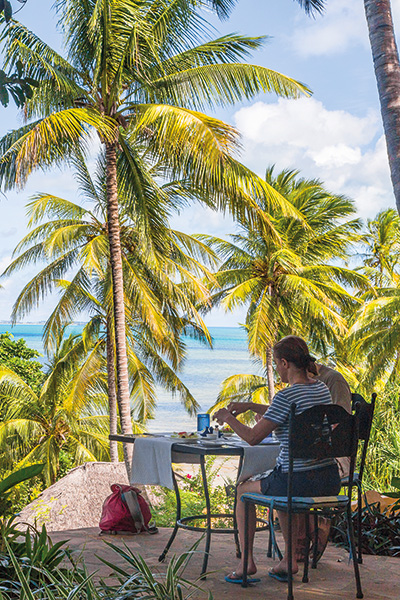
Guests at Kinasi Lodge enjoy breakfast overlooking the Kinasi Pass, which divides mainland Mafia from the rest of the archipelago.
Full board is included in the price of accommodation at all lodges. Budget around $80 per person per day for any excursions, such as dhow cruises, scuba diving, snorkelling, island tours and fishing. At the current exchange rate, a five-night holiday on Mafia Island including return flights from Johannesburg with FastJet, transfers to Mafia, marine park fees, daily excursions and spending money would cost about R18000.
Pack
Whatever you can fit into a medium-sized, soft carry-on bag is more than enough. Pack a costume, shorts, T-shirts and flip flops. Scuba and snorkelling gear can be rented from the lodges.
This article first appeared in the November 2014 issue of Getaway Magazine.











